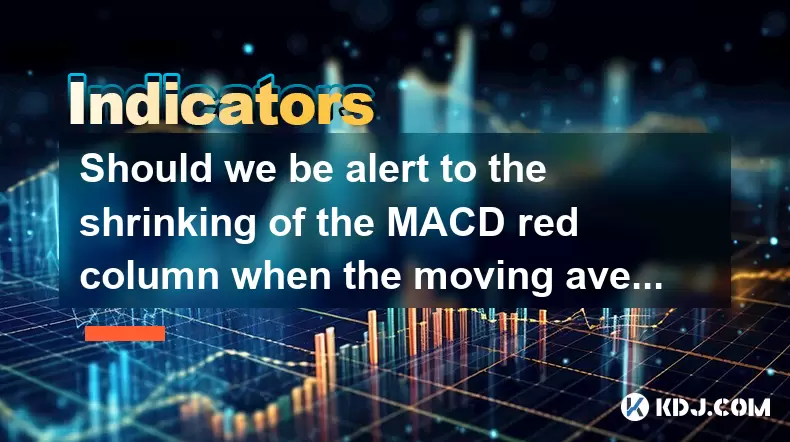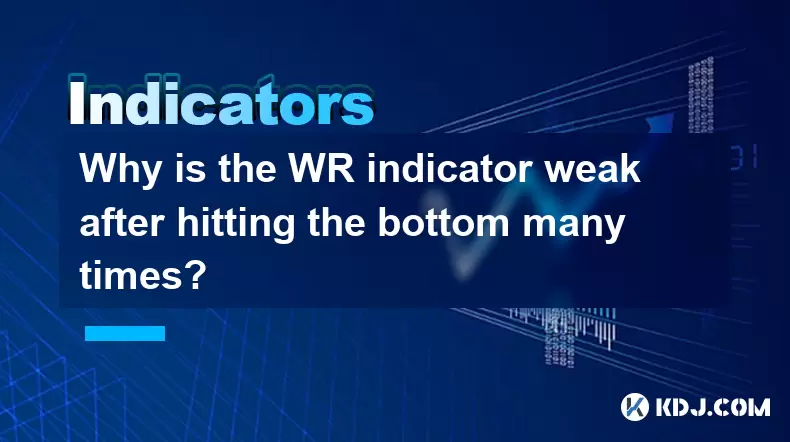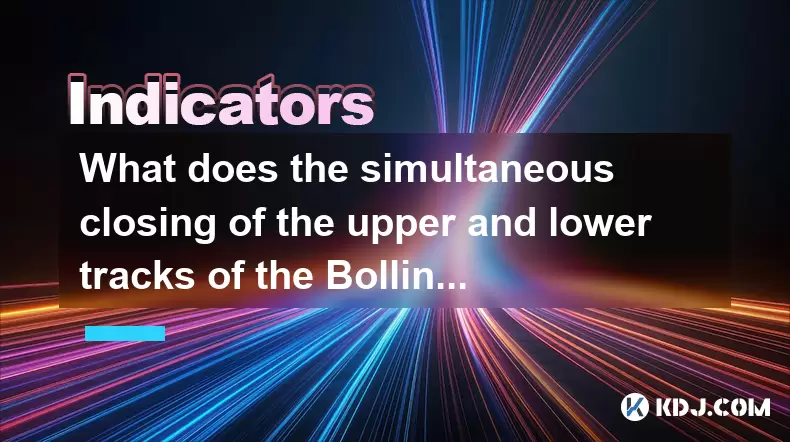-
 Bitcoin
Bitcoin $101,898.5005
-0.75% -
 Ethereum
Ethereum $2,258.1125
-1.07% -
 Tether USDt
Tether USDt $1.0004
0.01% -
 XRP
XRP $2.0178
-2.93% -
 BNB
BNB $624.0243
-1.53% -
 Solana
Solana $134.3298
-0.90% -
 USDC
USDC $0.9999
0.01% -
 TRON
TRON $0.2675
-2.05% -
 Dogecoin
Dogecoin $0.1538
-1.96% -
 Cardano
Cardano $0.5482
-1.11% -
 Hyperliquid
Hyperliquid $35.5636
5.45% -
 Bitcoin Cash
Bitcoin Cash $453.4902
-1.66% -
 Sui
Sui $2.5134
-2.97% -
 UNUS SED LEO
UNUS SED LEO $9.1292
1.77% -
 Chainlink
Chainlink $11.8457
-1.60% -
 Stellar
Stellar $0.2312
-2.73% -
 Avalanche
Avalanche $16.9721
0.29% -
 Toncoin
Toncoin $2.7549
-3.82% -
 Shiba Inu
Shiba Inu $0.0...01081
-1.10% -
 Litecoin
Litecoin $80.8250
-0.71% -
 Hedera
Hedera $0.1374
0.21% -
 Monero
Monero $305.4827
-2.36% -
 Ethena USDe
Ethena USDe $1.0006
0.00% -
 Dai
Dai $1.0000
-0.01% -
 Polkadot
Polkadot $3.2085
-3.12% -
 Bitget Token
Bitget Token $4.0845
-3.13% -
 Uniswap
Uniswap $6.3353
-1.63% -
 Pi
Pi $0.5085
-0.70% -
 Pepe
Pepe $0.0...08913
-3.82% -
 Aave
Aave $232.7090
-0.58%
How to interpret the MACD's second golden cross on the water but insufficient volume?
The second golden cross above the zero line in MACD suggests a potential bullish continuation, especially when confirmed by strong volume and supportive price action.
Jun 23, 2025 at 05:01 pm

Understanding the MACD Indicator and Its Significance
The Moving Average Convergence Divergence (MACD) is a widely used technical analysis tool in cryptocurrency trading. It helps traders identify potential buy or sell signals by showing the relationship between two moving averages of an asset’s price. The MACD line, signal line, and histogram are the three key components of this indicator. When interpreting patterns like the second golden cross above the zero line, it's essential to understand how these elements interact with each other and with broader market conditions.
A golden cross typically occurs when the MACD line crosses above the signal line, suggesting a bullish trend. However, when this happens for the second time while both lines remain above the zero line, it indicates a continuation rather than the start of a new trend. This pattern is particularly relevant in crypto markets due to their high volatility and frequent retracements after strong moves.
What Is the "Second Golden Cross on the Water"?
In technical charting terminology, the phrase "on the water" refers to situations where the MACD lines are above the zero line. A first golden cross above zero often marks the beginning of a strong uptrend. A second golden cross under the same condition suggests that after a minor pullback or consolidation, momentum has returned to the upside.
This scenario usually unfolds after a strong rally followed by a corrective phase. During the correction, the MACD line dips toward the signal line but doesn’t fall below the zero line. If the price then resumes its upward movement and the MACD line crosses above the signal line again, this forms the second golden cross on the water.
It's crucial to note that this formation doesn't guarantee a successful continuation of the trend. Traders must consider additional factors such as volume, price action, and other confirming indicators before making decisions.
Why Volume Matters in Confirming the Signal
Volume plays a pivotal role in validating any technical signal, including the second golden cross above zero. In ideal scenarios, rising prices should be accompanied by increasing volume, which confirms the strength behind the move. However, when volume remains insufficient during the second crossover, it raises concerns about the sustainability of the bullish signal.
Low volume may suggest that institutional buyers or major holders aren't participating actively in the rally. Retail traders might be driving the price increase, which can lead to weak follow-through and eventual reversal. In crypto markets, where pump-and-dump schemes are not uncommon, low volume could also indicate manipulation or short-lived rallies.
Therefore, when analyzing the second golden cross on the water, traders should closely monitor volume bars or on-balance volume (OBV) indicators to assess whether the buying pressure is genuine or artificial.
How to Approach Trading the Second Golden Cross with Low Volume
When encountering a second golden cross above zero with insufficient volume, traders have several options depending on their risk tolerance and strategy:
Wait for confirmation: Instead of entering immediately upon seeing the cross, observe if the next few candles show stronger volume and price progression. A breakout above recent swing highs with increased volume can serve as a better entry point.
Use complementary indicators: Incorporate tools like RSI, Stochastic, or Fibonacci retracement levels to filter out false signals. For example, if RSI is not overbought and shows a bullish divergence, it adds more weight to the MACD signal.
Set tight stop losses: Given the uncertainty around volume, placing tighter stop losses can help manage downside risk. This approach allows traders to exit quickly if the anticipated move fails to materialize.
Scale into positions: Rather than committing full capital at once, traders can enter gradually as the trend develops. Each subsequent candle closing above key resistance levels with slightly improving volume can justify adding to the position.
These strategies aim to reduce exposure to misleading signals while still allowing participation in potentially profitable trends.
Interpreting Price Action Alongside the MACD Signal
Price action provides critical context for interpreting technical indicators like MACD. When evaluating a second golden cross on the water, traders should pay close attention to candlestick formations, support/resistance levels, and overall market sentiment.
For instance, a bullish engulfing pattern forming around the time of the second cross may reinforce the positive MACD signal. Conversely, a shooting star or bearish harami could warn of impending rejection despite the bullish MACD alignment.
Additionally, traders should look for confluence with key moving averages (like the 50 EMA or 200 EMA). If the price holds above these averages and continues trending upwards, it supports the idea that the second golden cross is valid.
Another important aspect is market structure. If the current rally is part of a larger uptrend and the correction preceding the second cross was shallow, it increases the likelihood that the trend will continue. However, if the correction broke significant support levels or coincided with negative news, the signal becomes less reliable.
Frequently Asked Questions (FAQ)
What does it mean if the second golden cross occurs with shrinking volume?
A shrinking volume during the second golden cross suggests weakening participation from large players. While the MACD may indicate a return of momentum, lack of volume implies that the rally lacks conviction. Traders should treat this as a cautionary sign and seek further confirmation before taking a position.
Can I rely solely on the second golden cross for entry?
No, you should not rely solely on the second golden cross above zero without considering other market dynamics. This signal works best when combined with volume analysis, price action, and possibly other oscillators or trend filters to avoid false breakouts.
How long should I wait for volume to pick up after the second golden cross?
There’s no fixed timeframe, but generally, traders watch for increased volume within 1–3 candlesticks following the cross. If volume remains flat beyond that, the probability of a failed move increases. Adjust your expectations based on the time frame you're trading—daily charts allow more time compared to hourly or 15-minute charts.
Is the second golden cross more reliable in bull markets?
Yes, the second golden cross above zero tends to be more reliable in established bull markets where corrections are shallow and momentum returns quickly. In sideways or bearish environments, even a golden cross may result in a false signal due to lack of underlying demand.
Disclaimer:info@kdj.com
The information provided is not trading advice. kdj.com does not assume any responsibility for any investments made based on the information provided in this article. Cryptocurrencies are highly volatile and it is highly recommended that you invest with caution after thorough research!
If you believe that the content used on this website infringes your copyright, please contact us immediately (info@kdj.com) and we will delete it promptly.
- DOGE Recovery Amid US-Iran Tensions: A Market Rollercoaster
- 2025-06-23 20:45:13
- Fiserv, PayPal, and Stablecoins: A New Era of Interoperability?
- 2025-06-23 20:45:13
- Shytoshi Kusama, SHIB Dev, and Alpha Layer: Decoding the Latest Developments
- 2025-06-23 20:25:12
- BTC, ETH, and Institutional Buying: Smart Money Piling In?
- 2025-06-23 20:25:12
- Sonic Boom or Market Gloom? Navigating Volatility with Sonic, SPX6900, and Crypto
- 2025-06-23 20:55:12
- Shakespeare Coin for Sale: Rare Find or Fool's Gold?
- 2025-06-23 20:55:12
Related knowledge

Does the second golden cross of MACD above the zero axis represent the continuation of strength?
Jun 23,2025 at 08:21pm
Understanding the MACD IndicatorThe Moving Average Convergence Divergence (MACD) is a widely used technical analysis tool in cryptocurrency trading. It consists of three main components: the MACD line, the signal line, and the histogram. The MACD line is calculated by subtracting the 26-period Exponential Moving Average (EMA) from the 12-period EMA. The...

Is it effective when the DIF line suddenly crosses the zero axis when the volume is shrinking and the market is trading sideways?
Jun 23,2025 at 07:29pm
Understanding the DIF Line in Technical AnalysisThe DIF line, or the Difference Line, is a critical component of the MACD (Moving Average Convergence Divergence) indicator, widely used in technical analysis across cryptocurrency and traditional financial markets. It represents the difference between the 12-period EMA (Exponential Moving Average) and the...

Should we be alert to the shrinking of the MACD red column when the moving average is arranged in a bullish pattern?
Jun 23,2025 at 08:14pm
Understanding the MACD Red Column and Its SignificanceThe Moving Average Convergence Divergence (MACD) is a widely used technical indicator in cryptocurrency trading. It consists of three main components: the MACD line, the signal line, and the MACD histogram (the red column). The red column represents the difference between the MACD line and the signal...

Why is the WR indicator weak after hitting the bottom many times?
Jun 23,2025 at 07:56pm
Understanding the WR Indicator in Cryptocurrency TradingThe Williams %R (WR) indicator is a momentum oscillator used by traders to identify overbought and oversold levels in the market. It ranges from 0 to -100, with readings above -20 considered overbought and below -80 considered oversold. In the context of cryptocurrency trading, where volatility is ...

Is the shrinking cross star after the historical high a signal of topping?
Jun 23,2025 at 05:56pm
Understanding the Shrinking Cross Star PatternIn technical analysis, candlestick patterns are essential tools for traders to predict potential price movements. One such pattern is the shrinking cross star, which appears as a small-bodied candle with long upper and lower shadows, indicating indecision in the market. When this pattern forms after an asset...

What does the simultaneous closing of the upper and lower tracks of the Bollinger Bands indicate?
Jun 23,2025 at 09:01pm
Understanding Bollinger Bands in Cryptocurrency TradingBollinger Bands are a widely used technical analysis tool in cryptocurrency trading. Developed by John Bollinger, this indicator consists of three lines: the middle band is typically a 20-period simple moving average (SMA), while the upper and lower bands represent two standard deviations above and ...

Does the second golden cross of MACD above the zero axis represent the continuation of strength?
Jun 23,2025 at 08:21pm
Understanding the MACD IndicatorThe Moving Average Convergence Divergence (MACD) is a widely used technical analysis tool in cryptocurrency trading. It consists of three main components: the MACD line, the signal line, and the histogram. The MACD line is calculated by subtracting the 26-period Exponential Moving Average (EMA) from the 12-period EMA. The...

Is it effective when the DIF line suddenly crosses the zero axis when the volume is shrinking and the market is trading sideways?
Jun 23,2025 at 07:29pm
Understanding the DIF Line in Technical AnalysisThe DIF line, or the Difference Line, is a critical component of the MACD (Moving Average Convergence Divergence) indicator, widely used in technical analysis across cryptocurrency and traditional financial markets. It represents the difference between the 12-period EMA (Exponential Moving Average) and the...

Should we be alert to the shrinking of the MACD red column when the moving average is arranged in a bullish pattern?
Jun 23,2025 at 08:14pm
Understanding the MACD Red Column and Its SignificanceThe Moving Average Convergence Divergence (MACD) is a widely used technical indicator in cryptocurrency trading. It consists of three main components: the MACD line, the signal line, and the MACD histogram (the red column). The red column represents the difference between the MACD line and the signal...

Why is the WR indicator weak after hitting the bottom many times?
Jun 23,2025 at 07:56pm
Understanding the WR Indicator in Cryptocurrency TradingThe Williams %R (WR) indicator is a momentum oscillator used by traders to identify overbought and oversold levels in the market. It ranges from 0 to -100, with readings above -20 considered overbought and below -80 considered oversold. In the context of cryptocurrency trading, where volatility is ...

Is the shrinking cross star after the historical high a signal of topping?
Jun 23,2025 at 05:56pm
Understanding the Shrinking Cross Star PatternIn technical analysis, candlestick patterns are essential tools for traders to predict potential price movements. One such pattern is the shrinking cross star, which appears as a small-bodied candle with long upper and lower shadows, indicating indecision in the market. When this pattern forms after an asset...

What does the simultaneous closing of the upper and lower tracks of the Bollinger Bands indicate?
Jun 23,2025 at 09:01pm
Understanding Bollinger Bands in Cryptocurrency TradingBollinger Bands are a widely used technical analysis tool in cryptocurrency trading. Developed by John Bollinger, this indicator consists of three lines: the middle band is typically a 20-period simple moving average (SMA), while the upper and lower bands represent two standard deviations above and ...
See all articles
























































































